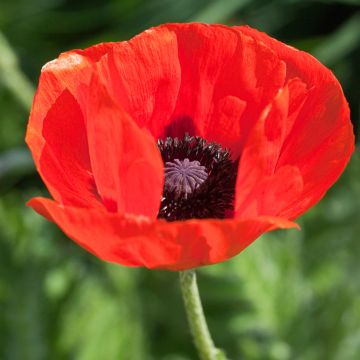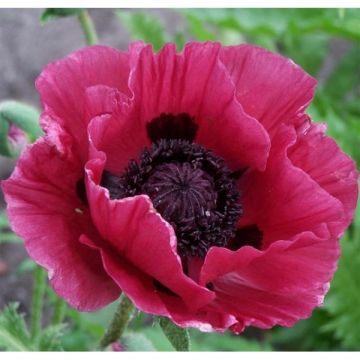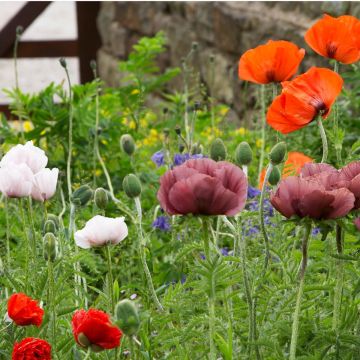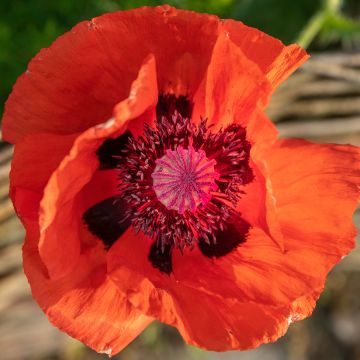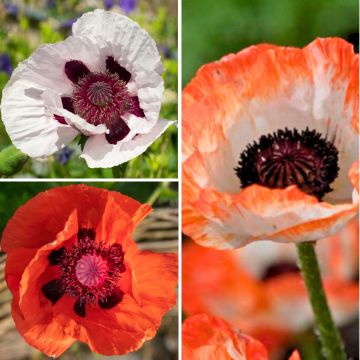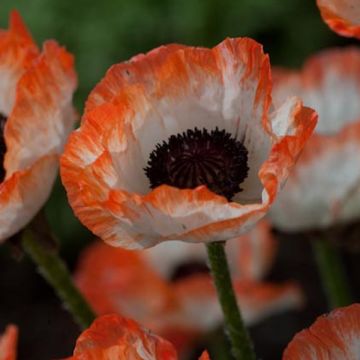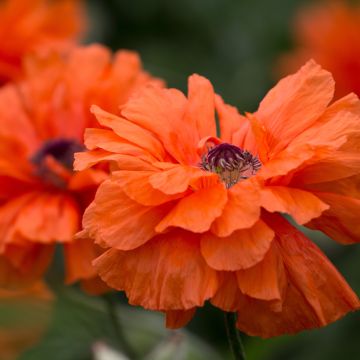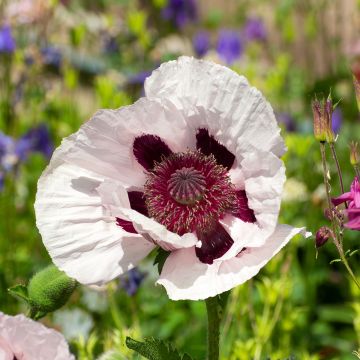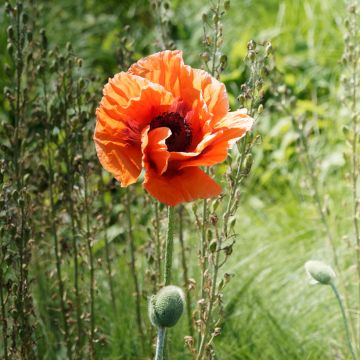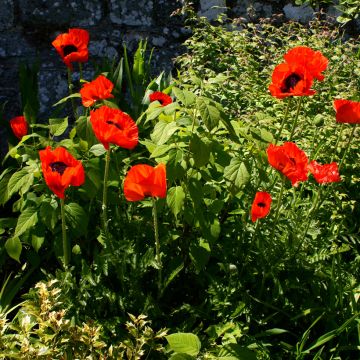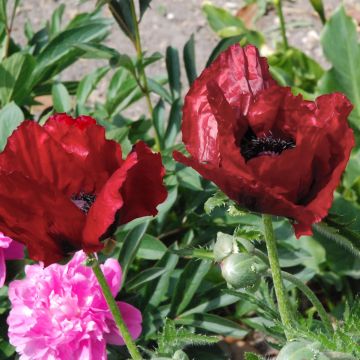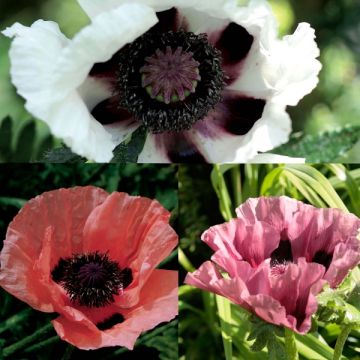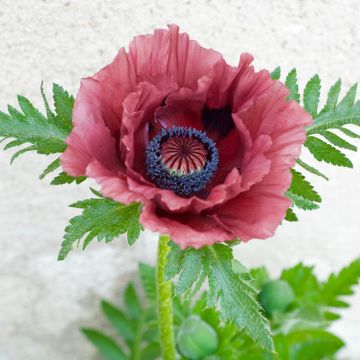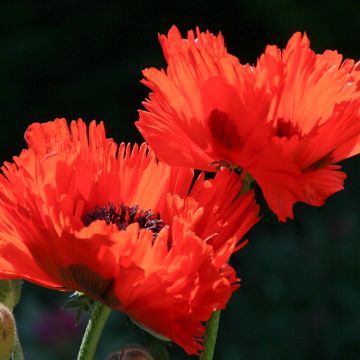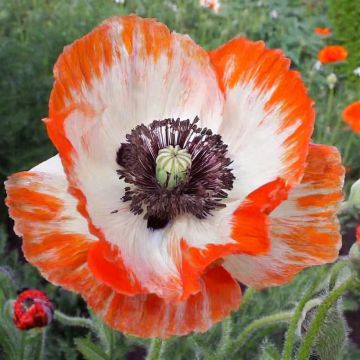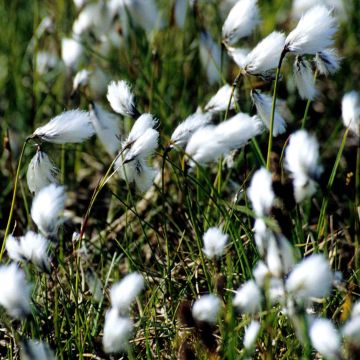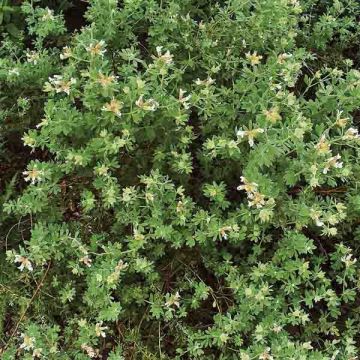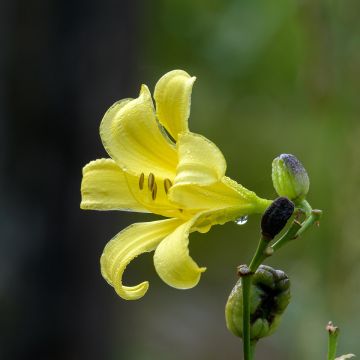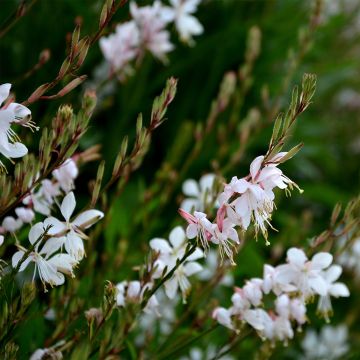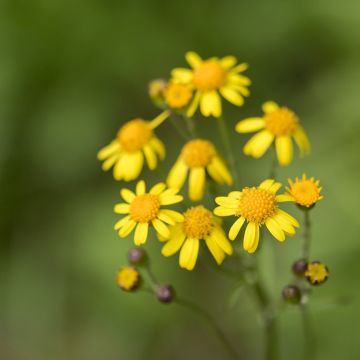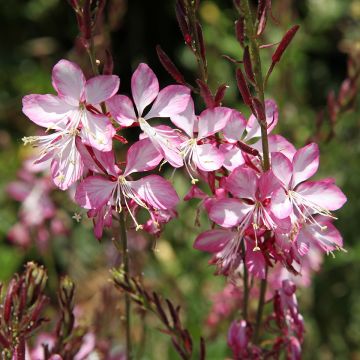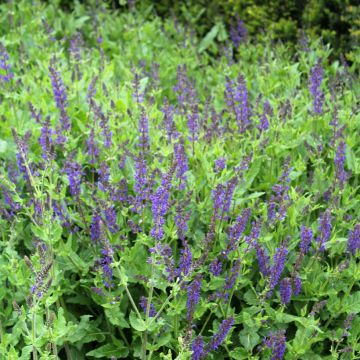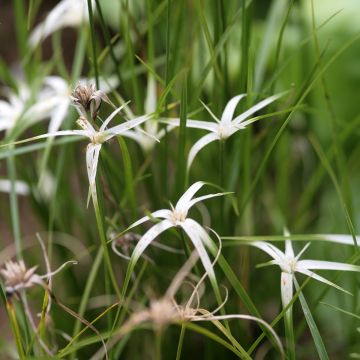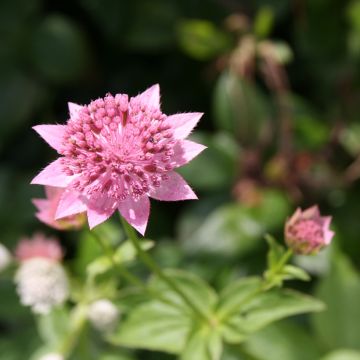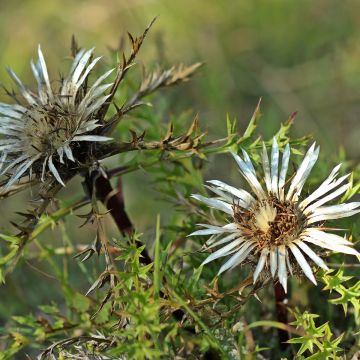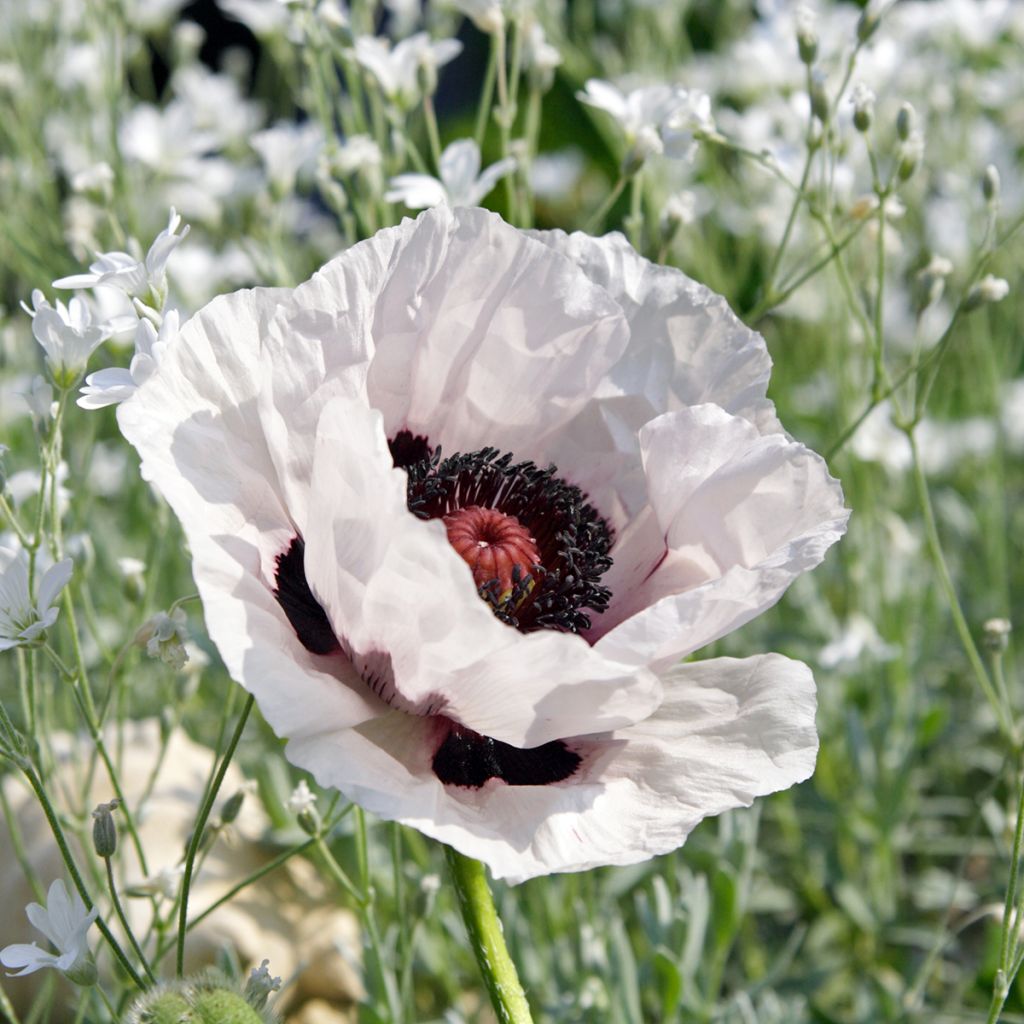

Papaver orientale Snow Goose
Papaver orientale Snow Goose
Papaver orientale Snow Goose
Oriental Poppy, Tournefort Poppy
Why not try an alternative variety in stock?
View all →This plant carries a 12 months recovery warranty
More information
We guarantee the quality of our plants for a full growing cycle, and will replace at our expense any plant that fails to recover under normal climatic and planting conditions.
From €5.90 for pickup delivery and €6.90 for home delivery
Express home delivery from €8.90.
From €5.90 for pickup delivery and €6.90 for home delivery
Express home delivery from €8.90.
Does this plant fit my garden?
Set up your Plantfit profile →
Description
The Papaver Orientale 'Snow Goose' is one of the most decorative Oriental poppies. Its green foliage, highly dissected, is particularly ornamental and forms a well-balanced clump. It produces a bright flowering from May to July that illuminates the flower beds. Large white corollas appear, formed by two rows of petals. Those in the centre are adorned with a purple macule, creating a superb contrast, accentuated by the also purple heart. This perennial plant thrives in full sun and can easily grow in well-drained soil. It also withstands summer drought well, with its foliage disappearing during this period and reappearing in autumn.
The Poppy or Papaver is a member of the Papaveraceae family, which includes 42 genera and 775 species, including many beautiful flowers such as the Romneya coulteri, or Tree Poppy, with impressive dimensions. The Oriental Poppy or Tournefort's Poppy is a perennial plant native to Asia Minor, introduced in France in the early 18th century. The botanical species grows from the Caucasus to Iran, passing through Turkey, where it forms perennial clumps, with the aboveground part dying in winter and reappearing in spring. Each wild plant develops a few villous stems, emerging from a compact tuft of dissected leaves, each bearing a solitary flower, primarily red, sometimes white, orange, or lavender. Flowering is interrupted in late May or July due to the prevailing heat in these regions.
The variety 'Snow Goose' stands out for its original colour combination, which is very "stylish". This beautiful perennial forms a clump of intense green leaves, more or less dark, about thirty centimetres in height and width. Elongated, the leaves are highly dissected, similar to some ferns, and have real ornamental qualities. From the clump of leaves, solid stems rise from May, each carrying a solitary flower. Two distinct rows of petals form the double corolla. The central crown is erect, while the outer row spreads almost horizontally. The petals are slightly crumpled, giving them a romantic grace. They are pure white but can sometimes show a very slight pale pink reflection. Each petal of the central crown bears a dark purple macule in its middle part, which joins the purple heart, consisting of female floral parts surrounded by a circle of stamens (male parts). The overall effect is highly architectural and seems to draw a new flower within the flower. Each flower is clear and contrasting, with a short lifespan, but they renew regularly, creating a refined scene in the garden.
The 'Snow Goose' Poppy will be perfect in a mixed flower bed with other perennials. You can pair it with other plants whose foliage or flowering will take over in midsummer to hide its absence. In the foreground, plant Armeria, or Spanish Daisy, a small creeping perennial that produces pompoms of white, pink, or red flowers depending on the variety, from May to September, with just a short pause in August. Little known despite its ornamental qualities, the Belamcanda chinensis, or Leopard Lily, is a rhizomatous perennial that offers splendid star-shaped orange flowers speckled with reddish-brown in summer. The Centaurea dealbata Steenbergii is a Mountain Bluet with very bright magenta flowers, blooming from July to September and thus extending the interest of your flower bed until autumn.
Report an error about the product description
Flowering
Foliage
Plant habit
Safety measures
Botanical data
Papaver
orientale
Snow Goose
Papaveraceae
Oriental Poppy, Tournefort Poppy
Cultivar or hybrid
atteintescutaneomuqueuses
Cette plante peut provoquer l'apparition de réactions cutanées indésirables, une atteinte des yeux, ou des difficultés respiratoires si elle est ingérée.
Ne la plantez pas là où de jeunes enfants peuvent évoluer. Evitez tout contact avec la peau: privilégiez l'emploi de gants pour la manipuler. En cas de contact, lavez-vous soigneusement les mains et rincez abondamment à l'eau la zone concernée. Lavez les vêtements entrés en contact. En cas de réaction cutanée, contactez votre médecin ou le centre antipoison le plus proche de chez vous. En cas d'atteinte étendue ou de difficultés respiratoires, appelez immédiatement le 15 ou le 112.Pensez à conserver l'étiquette de la plante, à la photographier ou à noter son nom, afin de faciliter le travail des professionnels de santé.
Davantage d'informations sur https://plantes-risque.info
Other Oriental Poppies (Papaver orientale)
Planting and care
The 'Snow Goose' Oriental Poppy is a very hardy plant; it can withstand temperatures dropping to -20 °C (- 4°F) and even lower. Like most Poppies, it is easy to grow. Any soil, even limestone, is suitable as long as it is well-drained and sufficiently deep. This plant fears heavy, waterlogged soils in winter. The soil must also be deep so that its long, fleshy taproot can develop properly. Plant it in full sun. Cut off the faded flower stalks and clean up the old foliage during summer, but be careful to wear gloves, as the white latex secreted by the plant is toxic and can cause burns if it comes into contact with the eyes.
Planting period
Intended location
Care
This item has not been reviewed yet - be the first to leave a review about it.
Summer flowering perennials
Haven't found what you were looking for?
Hardiness is the lowest winter temperature a plant can endure without suffering serious damage or even dying. However, hardiness is affected by location (a sheltered area, such as a patio), protection (winter cover) and soil type (hardiness is improved by well-drained soil).

Photo Sharing Terms & Conditions
In order to encourage gardeners to interact and share their experiences, Promesse de fleurs offers various media enabling content to be uploaded onto its Site - in particular via the ‘Photo sharing’ module.
The User agrees to refrain from:
- Posting any content that is illegal, prejudicial, insulting, racist, inciteful to hatred, revisionist, contrary to public decency, that infringes on privacy or on the privacy rights of third parties, in particular the publicity rights of persons and goods, intellectual property rights, or the right to privacy.
- Submitting content on behalf of a third party;
- Impersonate the identity of a third party and/or publish any personal information about a third party;
In general, the User undertakes to refrain from any unethical behaviour.
All Content (in particular text, comments, files, images, photos, videos, creative works, etc.), which may be subject to property or intellectual property rights, image or other private rights, shall remain the property of the User, subject to the limited rights granted by the terms of the licence granted by Promesse de fleurs as stated below. Users are at liberty to publish or not to publish such Content on the Site, notably via the ‘Photo Sharing’ facility, and accept that this Content shall be made public and freely accessible, notably on the Internet.
Users further acknowledge, undertake to have ,and guarantee that they hold all necessary rights and permissions to publish such material on the Site, in particular with regard to the legislation in force pertaining to any privacy, property, intellectual property, image, or contractual rights, or rights of any other nature. By publishing such Content on the Site, Users acknowledge accepting full liability as publishers of the Content within the meaning of the law, and grant Promesse de fleurs, free of charge, an inclusive, worldwide licence for the said Content for the entire duration of its publication, including all reproduction, representation, up/downloading, displaying, performing, transmission, and storage rights.
Users also grant permission for their name to be linked to the Content and accept that this link may not always be made available.
By engaging in posting material, Users consent to their Content becoming automatically accessible on the Internet, in particular on other sites and/or blogs and/or web pages of the Promesse de fleurs site, including in particular social pages and the Promesse de fleurs catalogue.
Users may secure the removal of entrusted content free of charge by issuing a simple request via our contact form.
The flowering period indicated on our website applies to countries and regions located in USDA zone 8 (France, the United Kingdom, Ireland, the Netherlands, etc.)
It will vary according to where you live:
- In zones 9 to 10 (Italy, Spain, Greece, etc.), flowering will occur about 2 to 4 weeks earlier.
- In zones 6 to 7 (Germany, Poland, Slovenia, and lower mountainous regions), flowering will be delayed by 2 to 3 weeks.
- In zone 5 (Central Europe, Scandinavia), blooming will be delayed by 3 to 5 weeks.
In temperate climates, pruning of spring-flowering shrubs (forsythia, spireas, etc.) should be done just after flowering.
Pruning of summer-flowering shrubs (Indian Lilac, Perovskia, etc.) can be done in winter or spring.
In cold regions as well as with frost-sensitive plants, avoid pruning too early when severe frosts may still occur.
The planting period indicated on our website applies to countries and regions located in USDA zone 8 (France, United Kingdom, Ireland, Netherlands).
It will vary according to where you live:
- In Mediterranean zones (Marseille, Madrid, Milan, etc.), autumn and winter are the best planting periods.
- In continental zones (Strasbourg, Munich, Vienna, etc.), delay planting by 2 to 3 weeks in spring and bring it forward by 2 to 4 weeks in autumn.
- In mountainous regions (the Alps, Pyrenees, Carpathians, etc.), it is best to plant in late spring (May-June) or late summer (August-September).
The harvesting period indicated on our website applies to countries and regions in USDA zone 8 (France, England, Ireland, the Netherlands).
In colder areas (Scandinavia, Poland, Austria...) fruit and vegetable harvests are likely to be delayed by 3-4 weeks.
In warmer areas (Italy, Spain, Greece, etc.), harvesting will probably take place earlier, depending on weather conditions.
The sowing periods indicated on our website apply to countries and regions within USDA Zone 8 (France, UK, Ireland, Netherlands).
In colder areas (Scandinavia, Poland, Austria...), delay any outdoor sowing by 3-4 weeks, or sow under glass.
In warmer climes (Italy, Spain, Greece, etc.), bring outdoor sowing forward by a few weeks.

































